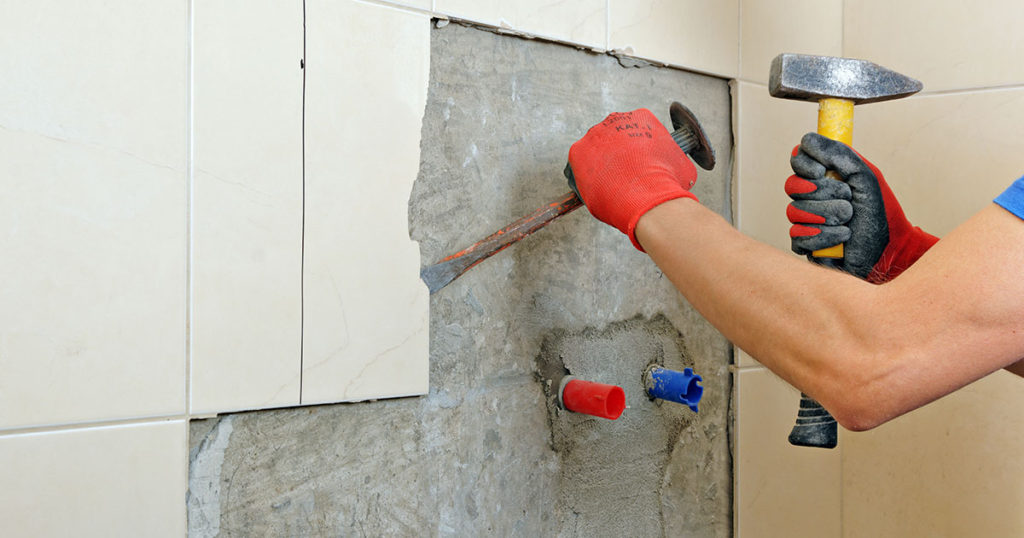How to Budget for Home Projects
A renovation project can add square footage, modern fixtures, value, and comfort to your home, but what does it take to get started?
How much does a home renovation cost, and how much should you spend? Like most self-directed projects, once the idea to commit to a renovation takes hold, the question of budget rises to the top. But what is a realistic budget, and how can you be sure to understand what exactly you are paying for?
Before you start thinking about cabinets and tile, before you choose showerheads and sinks, before you swing your first hammer and drive your first nail, the Empeople Daily has excellent tips on how to budget your home renovation projects.

How Much Does It Cost to Renovate a House?
A home renovation doesn’t happen every day in a homeowner’s life. But many builders, carpenters, and architects have made it their daily work to translate the plans in your head into actual designs with materials and real results. For professionals, home renovation is a lifelong pursuit.
Why do you want to do this? How much do you want to spend? This is why it is important first to identify your home renovation project with clear goals and objectives and establish your budget early.
Whether it’s a new kitchen, an expanded family room, or an enclosed sun porch, it should be no obstacle if it can be imagined. And while goals can be diverse, most folks settle on just two primary reasons: value and enjoyment.
For example, suppose your family has grown since your mortgage closed and 1.5 bathrooms in a home of four are no longer enough. In that case, the goal of building out a whole second washroom with space for laundry, a shower, and a tub will not only add value to the home if and when you choose to sell but also add to the overall enjoyment of the inhabitants, with reduced waiting times and more space.
Some home projects are specifically aimed at increasing the resale value, and the Empeople Daily has another blog post to help you identify your renovation goals right here, including which projects the experts say to earn the most back in a resale.
Once you have clearly defined your renovation project, it’s time to start calculating the costs. To help you get there, the fine folks at NerdWallet.com have gathered a comprehensive list of interior and exterior home renovation project cost estimates that you can find right here. But beware, these are estimates, and times are changing.
How Much Should I Spend on a Renovation?
So now that you have defined a hypothetical bathroom renovation as your most important home improvement project, you need to start collecting a list of material and labor cost estimates for each of the constituent elements.
Each of these line items has a cost, and in the process of naming them, a smart home renovator can successfully isolate an object’s price and choose from a range of elements and styles that best fit the project and the budget.
For example, in a bathroom-laundry renovation, you can expect to pay for the following items:
- Cabinetry and hardware
- Appliances and ventilation
- Countertops and sinks
- Flooring
- Lighting
- Walls and ceilings
- Windows and doors
- Plumbing and faucets
- Design
- Installation and labor
- Other
In this step of budget-building, successful home renovators know that choices, and compromises, must be made. For instance, you could recycle your old doors and windows and use that money to treat yourself instead to a pricier low-flush toilet and energy-efficient washer-dryer combo.
Talk with several architects, designers, and builders if you can. Talk to professionals with experience and neighbors with similar floor plans. Use these conversations to ask how much it generally costs to manage your upgrade, where spending should be concentrated, and where it can be held back.
Request a bid from at least three established, reputable contractors in your area. Ask for itemized cost estimates in writing and functional timelines for each stage of the project, and then compare what they tell you before you choose. Go with what works best for you, and remember that the lowest bidder isn’t always the obvious choice.

How Do I Cut Renovation Costs?
Some DIY home renovation projects fall within your skillset. You should be able to accomplish them yourself and perhaps a few instructional videos off the Internet. That’s great, and if you feel handily competent enough to install your own cabinets and grout your own tile save money this way.
But what if your DIY skills don’t include rewiring your living room or framing a doorway? Not to worry, there are still a few ways you can lend an inexpert hand and save money.
- DIY Demolition – Your sledgehammer skills in bringing down a designated wall or removing the old floor can be put to good use under the careful supervision of professionals. Smashing things can also be a lot of fun.
- DIY Shopping – If you’ve done the hard work and identified all of the line items in your renovation, and you have the mental energy to continue, then you might be able to purchase all the materials yourself and then hire out for labor. It’s a great way to cut costs but be sure to discuss this first with your contractor and make sure you’re getting the right things for your project.
- DIY Subcontractor Hiring – Your main contractor likely has a team of reliable subcontractors to work with and a substantial history of cooperation. That’s great and shouldn’t be discounted, but if your project requires multiple specialists for multiple specific jobs, and you can headhunt the subcontractors yourself, then you might get a better deal. Be sure to discuss this with your main contractor first.
- DIY Paint – Save as much as half the cost of painting by picking up the brush yourself. Be careful, though, because even if painting isn’t the most challenging job to do in a renovation, it certainly can be the easiest to do poorly.
How to Anticipate Surprises and Contingencies?
Like any major undertaking, a remodeling project can be plagued by unexpected contingencies. How well a successful home renovator anticipates these budgetary surprises will go a long way in predicting survival.
First, prices can change. An initial budget at the outset of construction will encounter contingencies along the way that will force decisions and influence the outcome. To get ahead of this, we recommend a 20 percent buffer in your final home renovation budget.
This means that at least one-fifth of your final budget cannot be spent on other stuff but must remain in reserve to cover any extras. Your old walls might be rotten, or your existing wiring insufficient to the task at hand.
As your home renovation project progresses and even nears completion, that 20 percent in reserve can be slowly released, like air from a balloon, to other line items in the budget.
Likewise, a successful home renovator can avoid creeping prices and looming deadlines with outstanding preparation. Have your architect or designer prepare detailed drawings and then make all of your decisions BEFORE you begin.
Then don’t change your mind.
But if you must make changes once the project is underway, keep in mind that even minor deviations from the original plan can begin to add up. Each incremental increase adds to the overall cost in slow, creeping strangulation of the original idea. Consider your changes carefully, and then consider a tradeoff inline items—carpet instead of a wood floor, floor lamps instead of recessed lighting.

How Do You Pay for a Home Remodel?
Finally, qualified Empeople members can add value to their most important investment with a flexible, no-fee home improvement loan home equity line of credit (HELOC).
Empeople offers top market rates for add-on mortgages and home equity lines of credit up to 95% of your home’s current value. With our quick and easy process, your remodeling project, partial extension, or a new roof may be just a click away from being shovel-ready.
Rates vary according to flexible loan terms, credit score, debt to income ratio, and type of loan. Talk to your Empeople representative for information to help you make your best choice. Or, get the ball rolling with a no-fee application via our Online Loan Center.



